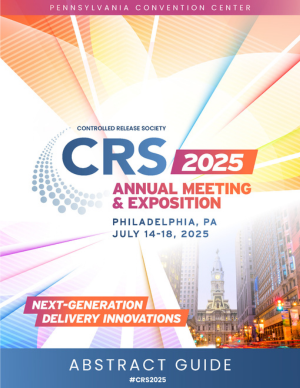Gene Delivery and Gene Editing
Tech Session III: Gene Delivery and Gene Editing II
Lipid Nanoparticle Delivery for CRISPR Gene Editing in Primary Human T-cells
Wednesday, July 16, 2025
10:54 AM - 11:05 AM EDT
Location: 119 A
Introduction: Inborn errors of immunity (IEI) like hemophagocytic lymphohistiocytosis (HLH) may be treatable with T-cell gene correction. Lipid nanoparticles (LNPs) enable non-viral delivery of CRISPR machinery to a cell, but nuclear transport is a challenge. We previously showed truncated Cas9-target sequences (tCTS) enhance nuclear entry by allowing Cas9 ribonucleoprotein binding to HDR template (HDRT) and facilitating nuclear transport via a nuclear localization signal[2]. We identify LNPs that transfect primary human T cells and investigate adding tCTSs to improve large construct HDR knock-in (KI).
Learning Objectives:
At the completion of this activity, participants will know
- Recognize the challenges of efficient DNA delivery to the nucleus for CRISPR editing.
- Understand the impact of adding tCTS to HDRT for increasing nuclear delivery.
- Describe the use of LNPs for translatable T-cell editing ex vivo for inborn errors of immunity.
Daniel Chu, BS – Undergraduate, UC Berkeley; Atip Lawanprasert, PhD – Postdoctoral Fellow, UC Berkeley; Niren Murthy, PhD – Principal Investigator, UC Berkeley; David Nguyen, MD, PhD – Principal Investigator, UC Berkeley, UC San Francisco

Joy J. Chen, BS
Graduate Student
UC Berkeley
Oakland, California, United States

